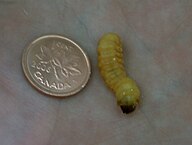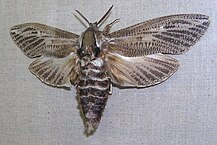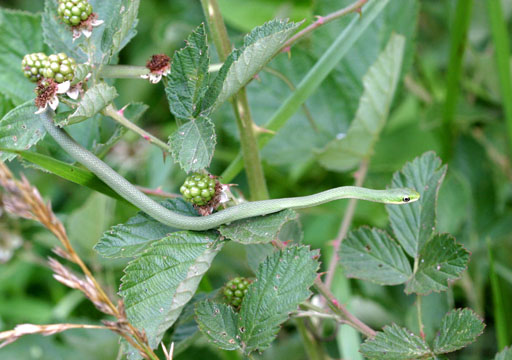Butterworms, also known as Trevo Worms, are highly nutritious caterpillars that deserve more attention from reptile, amphibian and invertebrate keepers. They have many of the advantages associated with wild-caught insects yet lack most of the risks. Their calcium content of 42.9 mg/100g (as compared to 14 and 3.2 mg/100g for crickets and mealworms) is especially-impressive. Simple to use and store, and accepted by a huge array of species, Butterworms are in many ways superior to the more commonly-used feeders. I promoted their use throughout my long career as a zookeeper, and today would like to introduce them to those readers who may be interested in adding important nutritional variety to their pets’ diets. Please also see the articles linked below for information on other “alternative” foods such as sow bugs, sap beetles, leaf litter invertebrates, earwigs and many others.
Natural History
Although they resemble beetle grubs, Butterworms are actually the larvae, or caterpillars, of the Chilean Trevo Moth (Chilecomandia moorei). As far as is known, they are found only in Chile, where their diet is comprised entirely of Trevo Bush (Trevoa trinervis) leaves.
Butterworms are collected rather than captive-reared, and are subjected to low levels of radiation before being exported from Chile. Irradiation prevents them from pupating, thereby addressing US Department of Agriculture concerns that the species could become established in the USA. This process, and the fact that they cannot be bred commercially, renders Butterworms a bit more costly than similar insects, but I believe their value as a food source merits the extra expense.
Nutritional Information
Being wild-caught, Butterworms likely provide nutrients absent from commercially-reared insects. They also exceed all other typical feeder insects in calcium content (please see Introduction, above), with only silkworms and phoenix worms approaching them in this regard (some find silkworms to be delicate, and phoenix worms are quite small, but both are also worth investigating).
The Butterworm’s protein content of 16.2% is on par with that of crickets, phoenix worms and waxworms, and below that provided by silkworms and roaches. Fat content stands at 5.21%, which is less than (considerably so, in many cases) that of all other commonly-used feeders.
Please Note: The nutritional needs of reptiles and amphibians vary by species and by individual age, health, and other factors. The fact that a food is “low in ash” or “high in protein” does not necessarily mean that it is a good or bad choice for your pet. Please post specific nutrition/feeding questions below.
Why Use Butterworms
In addition to their nutritional value, Butterworms are readily accepted by a wide variety of reptiles, amphibians, tarantulas, fishes, scorpions, birds and small mammals. They vary in coloration through shades of yellow, red and orange, and have a distinct, “fruity” scent. I’ve not seen any research on the subject, but these qualities perhaps may make them attractive to predators…in any case, Butterworms often incite interest from reluctant feeders.
Butterworms range from ½ inch to 1 ½ inches in size, with the average in most containers being ¾ inch. They are far plumper than waxworms, and ideally suited for both small and larger pets.
These colorful, chubby caterpillars are more active than waxworms and phoenix worms, yet can easily be confined to a shallow bowl or jar lid. I’ve found this to be especially useful when keeping certain treefrogs, geckos and other arboreal species that are reluctant to feed on the ground. Butterworms may also be used to provide important dietary variety to insectivorous snakes (Smooth Green Snakes, etc.), terrestrial salamanders and others that tend to accept relatively few traditional feeder species.
Storage
Butterworms can be kept under refrigeration at 42-45 F for at least 4, and possibly up to 6, months. I keep my refrigerator at 39 F, and have had no problems with losses at that temperature over periods of 2-4 weeks.
Further Reading
 That Reptile Blog – Reptile, Amphibian and Exotic Pet Care and Information
That Reptile Blog – Reptile, Amphibian and Exotic Pet Care and Information







I’m considering butterworms, silkworms and hornworms as the feeder insects of choice for my 3 and 4 month old leopard geckos. I can’t believe how many people are saying that butterworms have too much fat and should be only given as treats like waxworms. When I see the analysis they seem so much better like you said than most other options. Any issue with giving my geckos mostly butterworms with a little bit of silkworms and hornworms for variety?
Can I place a couple of each in the same feeding dish together?
Any truth to the stories I’ve been reading about the acid in butterworms burning geckos?
Thank you
Hello Karla,
There seems to be some differences between calcium levels as reported by different studies….the grubs may vary naturally; I’m looking into it. In any event, they are fine as part of the diet (no problems with acid that I know of) but are not suitable as a basis of the diet…best to vary among as many foods as possible.. Please see this article and let me know if you need more info, best, Frank